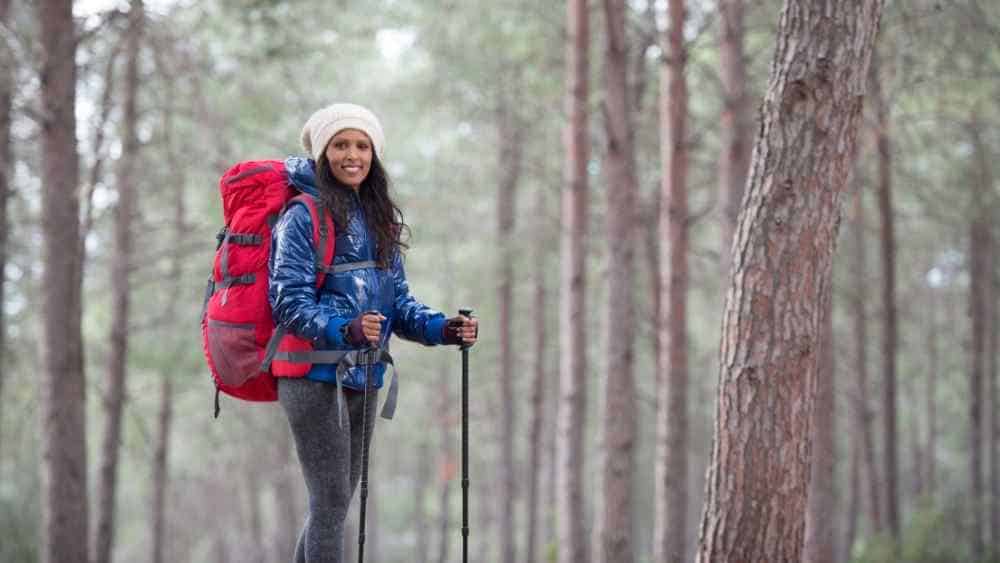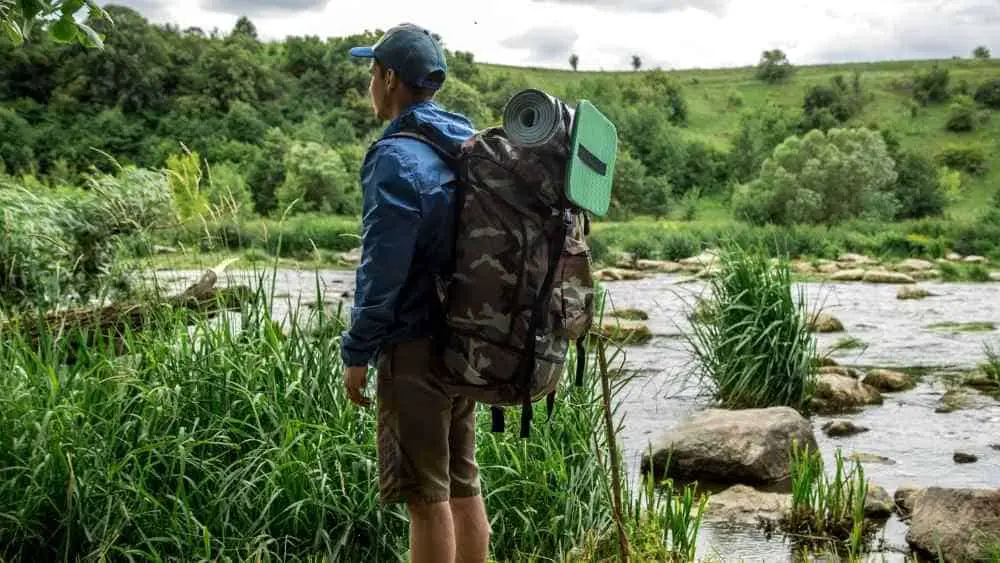Getting the ‘fit and sit’ right on your hiking backpack can make a huge difference to the comfort and enjoyment of any hiking trip. It can also prevent injury and stop you developing back problems in the future.
When you consider the weight that you will be carrying and the distance you will be carrying it for, it becomes clear just how vital wearing your backpack correctly can be.
In this article, we will look at the key steps you should take to get the most out of your backpack design, to ensure that the load is evenly distributed and your body is suitably protected.
Fit

Torso Length
Many people overlook this important measurement when choosing a backpack, because they think that they can adjust the straps to make the bag fit properly.
However, adjusting the straps will not be enough to give you a well fitted backpack. The length of the backpack is essential as it relates to your own torso length.
Getting it right will make a huge difference to your comfort and endurance over long distances.
The ideal backpack should extend from the C7 vertebrae at the base of your neck, to the iliac crest of your spine:
- To locate the C7 vertebrae you simply need to look down at your toes and feel for the large, bony lump that protrudes from the base of your neck.
- To locate your iliac crest you just need to place your hands on your hip bones and then draw them horizontally towards your spine until your thumbs meet. If you press down you will be touching your iliac crest.
As everyone’s body is different, the length between these two points can vary greatly, and it is always best to get your torso measured professionally by in store supervisors.
There are certain models of backpack that actually have adjustable torso lengths, but even these have limits to their range, which is why getting measured is the most effective and accurate thing to do.
Most brands will make their backpacks to fit the following size specifications:
- X small backpack – 15-17 inches long
- Small backpack – 16-19 inches long
- Medium backpack – 18-21 inches long
- Large backpack – 20-23 inches long
Sit
Once you have determined the size of your backpack, you now need to adjust the fit so that it sits well on your body.

If you are borrowing a friend’s backpack you will need to adjust the straps and belts to suit your body form as opposed to theirs, just as you will with a brand new backpack.
How the backpack sits on your body is paramount to your protection and comfort, and the following sequence is the best way to ensure that you get it right:
Put It On
It sounds obvious but you would be surprised how many people try to adjust their backpacks without actually wearing them.
A good idea is to prop your backpack up on a rock or bench when possible so that the weight is lifted while you slip it on and do your initial buckles and fastenings up.
You will then need to stand up, however, in order to assess the exact tightness and length of each for the following steps.
Adjust Waist Belt
The waist belt will hold most of a load of your backpack and will take the pressure off your back and neck.
To get the fit correct you should first shrug your shoulders and lift the backpack up, then you should clip the waist belt shut and tighten slightly.
When you release your shoulders the waist belt should drop down so that it sits firmly but comfortably on top of your hip bones.
The belt buckle should come round and tighten at the front of your stomach. It is important that the padding does not wrap all the way around your stomach however, as this will not leave you room for adjustment.
Instead: The two padded sections should sit on your hips and should leave a gap in the center where you can tighten the belt strap if necessary.
Adjust Shoulder Straps
Next up, you should tighten your shoulder straps in order to bring the backpack as close to your body as possible without it feeling restrictive.

Aim to create a snug hug around the padded shoulder straps, but no pinching. The straps should attach to the backpack a couple of inches above your shoulders.
Any bigger gap will indicate that the torso length is too long for your body.
Adjust Load-lifter Straps
After you have adjusted the shoulder straps you can adjust the laid-lifters which bring the upper section of the backpack closer to your body so it isn’t dragging you backwards.
These straps should be at a 45-degree angle from the top backpack section to shoulder straps. If your shoulder straps start to pinch you may have tightened load lifters too much.
Adjust Sternum Straps
Lastly, you can clip and adjust the sternum straps.
These should sit about an inch under your collarbone, at a 90 degree angle to the shoulder straps. Their function is to relieve the shoulders of stress and allow you to have a greater range of motion.
They also keep your shoulder straps from slipping off your shoulders and are particularly useful for hikers with narrow shoulders.
If you feel that you are short of breath and that your chest is constricted, you may have pulled your sternum straps too tight.
WSLS
If you can remember this mnemonic it will help you to remember the order in which you should make your adjustments: waist, shoulders, load-lifters, sternum.
Top Tips

A top tip is that you should practice fitting and adjusting your backpack with a full load.
Making your adjustments with an empty backpack will not give you an accurate idea of fit and feel.
Another top tip is that you should re-adjust your backpack every time you put it on.
This is because you will generally loosen the straps a little bit when taking your backpack off, and this loosening will have to be tightened again before you set off on your continued journey.
Whilst Walking
When you are in motion there are a few things you can do to help protect yourself against discomfort, fatigue and injury:
- Lean forward slightly to counteract the weight of your backpack.
- Tighten and loosen the shoulder straps and waist belt alternately, this way you will keep switching the concentration of pressure between them and neither area will become overly strained.
- Take regular breaks and stretch out along the road.
Final Thoughts
If you take care to buy the correct size backpack for your body, and follow the WSLS adjustment routine every time you put your pack on, you will maximize your comfort and minimize your risk of injury and over exertion.






